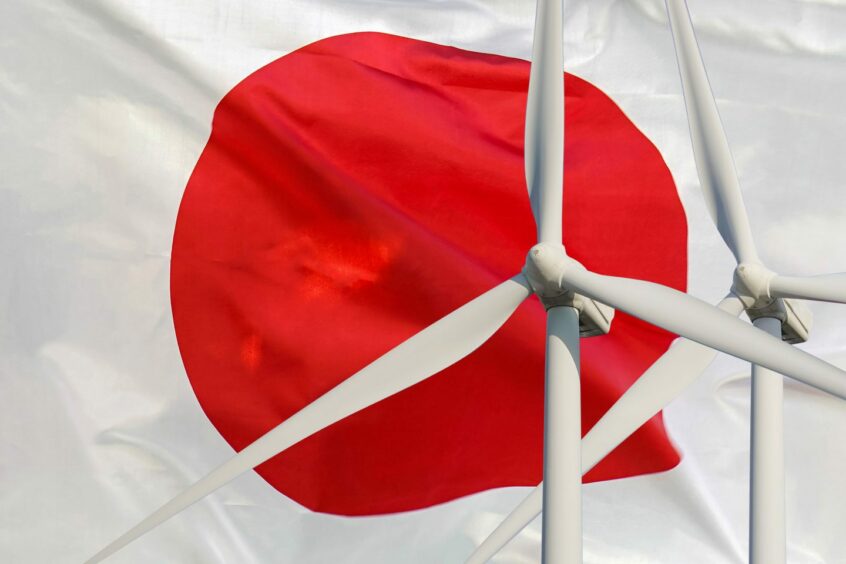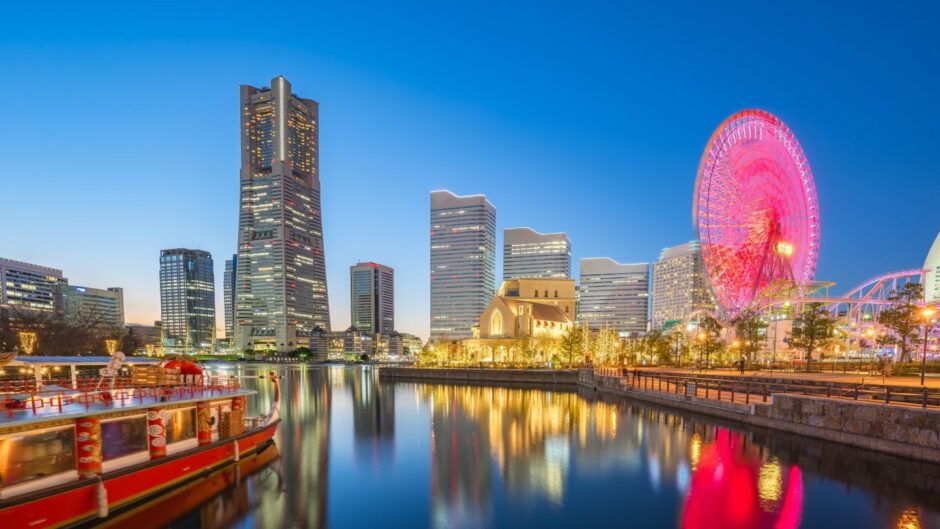
Major offshore wind developers, including bp (LON:BP), RWE Renewables, Equinor (OSLO:EQNR), Orsted (CPH:ORSTED), Shell (LON:SHEL), and TotalEnergies (LON:TTE), are excited by the huge offshore wind potential in energy-short Japan, delegates heard at the Japan Wind Energy 2022 conference in Tokyo.
Indeed, Japan has long been a major energy importer, relying heavily on fossil fuels. But the government is firmly behind a pivot to more domestic renewable energy to boost energy security in these uncertain times, as well as help meet its 2050 decarbonisation goals.
According to the Global Wind Energy Council (GWEC), Japan has around 128 GW of fixed-bottom offshore wind potential and 424 GW of floating offshore wind potential. Crucially, as Energy Voice reported yesterday, Japan has enormous potential to become a global leader in floating wind if the government can develop a coherent strategic plan for the sector.
“Considering Japan as an archipelago with strong wind speeds—even stronger and steadier offshore—the development of offshore wind is indispensable to increasing renewable energy supplies,” GWEC said in its latest global offshore wind outlook. Still, “despite the huge wind potential, Japan does not have any large-scale commercial wind operations, but times are changing.”
Japan is aiming to deploy 10 gigawatts (GW) of offshore wind capacity by 2030 and between 30 and 45 GW by 2040. Its first commercial offshore wind farm Akita Noshiro with 140MW capacity will start operating this year after all 33 turbines were successfully installed last month.
Elsewhere, a Mitsubishi-led consortium dominated Japan’s first-ever fixed-bottom offshore wind auction with record-low prices last December. The Japanese government selected three consortiums, all led by Mitsubishi, as the operators of offshore wind farms in Akita, northern Japan, and Chiba, near Tokyo, with a total generation capacity of 1.7 GW.
The Mitsubishi consortium offered much cheaper power than its rivals, but the outcome underscored how pricing overshadowed other aspects of a bid such as shorter time frames for implementation, while Mitsubishi’s domination raised concerns about the outlook for the sustainable development of the nascent sector.
As a result, officials are now reviewing the regulatory environment and pricing policy ahead of a second auction, to increase competition and bring offshore wind farms online faster. Draft rules that encourage wider competition for construction and restrict the ability of a single bidder to win multiple projects in one swoop are expected to be announced later this year.
Kiyoshi Doi, executive managing officer of Japan Renewable Energy Corporation, told delegates that the round one results, which were unexpected, raised a lot of questions. This stalled progress for the second round as the rules are now being revised. “From a global perspective this looks like uncertainty, but there has been progress. Although it would have been faster if round one results had been different” he said, adding that the government needs to ensure regulations are workable to move forward.
Offshore Wind Developers Remain Optimistic
Nevertheless, Matthias Bausenwein, senior vice president, offshore wind at bp, told delegates that BP is keen to play a part in Japan’s offshore wind story. Although he noted that regulatory frameworks need to be streamlined and clarity on pricing is required. Moreover, the government should not just be focused on pricing, but on building a sustainable offshore wind industry, said Bausenwein. Other challenges that he believes need addressing is the build out of the electricity grid and developing port infrastructure for future offshore wind development.
Jutta Dissen, senior vice president of RWE Renewables, said RWE is looking forward to participating in Japan’s second auction, which industry observers expect to happen in 2023. The company already has 60-70 people in country and is ready to transfer experience from Europe to Japan. She also noted it is positive that the Ministry of Economy, Trade, and Industry (METI) is working on the regulations and taking input from developers, adding that “clarity will be key.”
However, Dissen also highlighted the challenges ahead, including requirements for much-needed certainty around regulations, as well as the need to build a competitive supply chain to reduce costs. She also cautioned that the smaller scale of Japanese projects relative to other regions, such as Europe and the US, makes it less attractive for suppliers to invest in Japan’s wind sector.
Indeed, as Bausenwein said, Japan needs larger scale projects and a clear pipeline of developments going forward to enable developers and the supply chain to build capacity.
Masayuki Sugiyama, general manager for wind power energy business at Mitsui o.s.k. lines, stressed that a reliable domestic supply chain needs to be developed, particularly as Japanese coastal shipping capacity is not enough to service offshore wind – especially for transporting heavy components, such as turbines and foundations. More investment is needed, he said.
Frederik Andersen, head of renewables at Clarksons, told delegates that an assurance of a big multi-GW industry is needed for the supply chain to develop in Japan. He cautioned that the discussions remain local, but the industry is global. He encouraged Japanese companies to think regionally and invest in the European supply chain to learn, while waiting for the sector to develop in Asia.
Lars Johannes Nordil, vice president business development Asia at Equinor, said the fact that the government is taking onboard the learnings from its first auction shows the right drive and innovation to develop offshore wind. He also stressed that developers need to secure sufficient access to acreage and the grid, adding that “when value is there, history shows the supply chain follows. If they see opportunities in the market, they will establish themselves.”
Nordil also noted that Asia is almost where Europe was around 2011-12 in terms of offshore wind development. He cited how the UK authorities were forceful in developing the industry that led to offshore wind being more competitive compared with onshore wind and solar today. “That same drive in Japan will create a long-term industry”.
Nathalie Oosterlinck, head of global offshore wind, at Japan’s JERA, said the nation has “huge” potential, but a long-term economic vision will be key to developing the industry and that regulations cannot be changed every two years. Crucially, all developers agreed that they cannot make business plans without consistency.
Kohei Amakusa, head of market development Japan at Orsted, noted that Japan aspires to attract foreign direct investment in the sector. He added that the market size is also attractive with the Japanese electricity market one of the largest in Asia Pacific. “It also has a robust and credible legislation to administer offshore wind projects and Japan is serious about progressing offshore wind,” said Amakusa.
However, “there is an urgent need for speed and scale. The government needs to accelerate the sector and prioritize larger projects,” he added.
Meanwhile, Alban d’Hautefeuille, managing director, offshore wind in Asia at TotalEnergies, said the French company has been looking at the Japan market intensely over the past three years. “TotalEnergies is a key LNG supplier to Japan, therefore it makes sense to explore renewable energy with Japan,” he said.
He added that the research and development capabilities of Japan will provide much needed innovation for the very specific wind resources in North Asia, where the sea and soil conditions are very different to the North Sea. “We believe Japan has a fundamental role to play not just domestically, but regionally and globally,” he said.
For instance, many believe Japan can bring innovation to existing floating wind concepts and help industrialise the technology. This will be key for Asia, which generally has limited availability of shallow water compared to Europe.
Positive Outlook for Japan Offshore Wind
Julien Bocobza, a renewable energy-focused partner at international law firm White & Case, told Energy Voice that he remains very positive on the outlook for the offshore wind sector in Japan. “Japan has a population with very strong technical skills, the wind resource is one of the best in the world and the government has shown that they know what to do to protect energy supply when security is at risk. In addition to Japan’s clear and specific decarbonisation targets, the private sector – with developers from across the globe showing interest in the Japanese market – is also keen to contribute.”
“Japan also has low interest rates, developed, yet easy financing, which is another key to success. Overall, I am optimistic about their offshore wind sector, though the timing still remains unclear. I expect it to start taking off in 2023 or 2024, and could potentially exponentially expand once floating projects are auctioned,” added Bocobza, who is based in Tokyo.
Still, “investors need planning, not just for the second auction round, but out to 2030 and beyond. Meanwhile, the government may want to have a closer look at what other countries are doing in the context of an increasingly competitive market, where suppliers require robust pipelines of large projects,” he said.
Recommended for you


 © Supplied by Shutterstock
© Supplied by Shutterstock